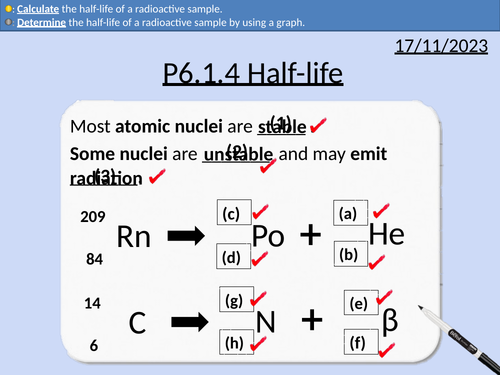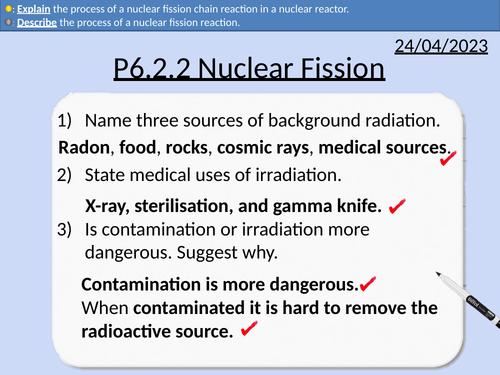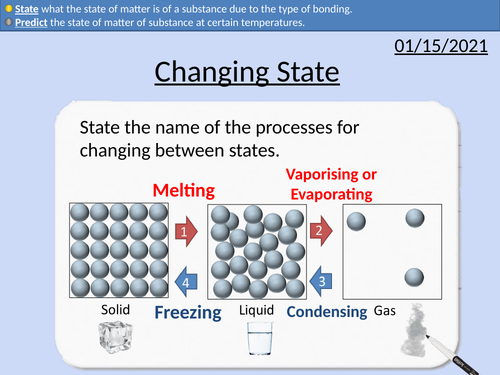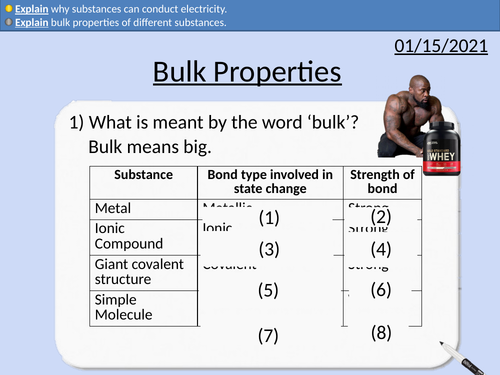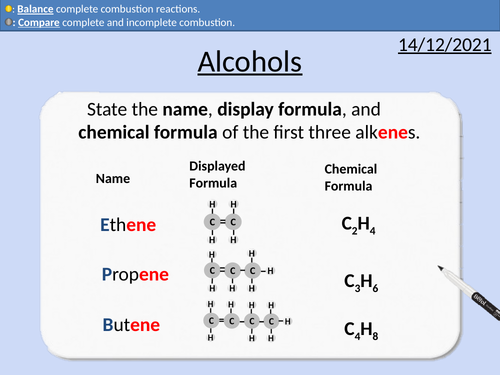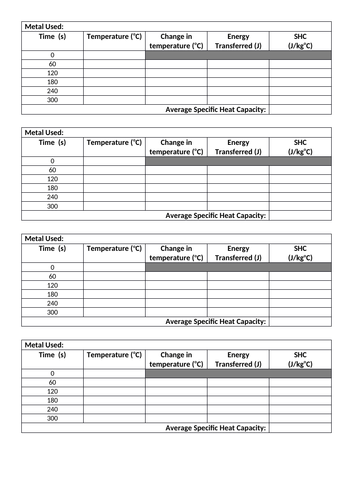496Uploads
163k+Views
70k+Downloads
All resources

GCSE Physics: Sounds in Solids and the Ear
This presentation covers OCR Gateway Physics 9-1 P5.1.4 Sound in Solids and the Ear. Includes student activities and full worked answers.
Structure of the ear.
Frequency range of human hearing.
Explanation of the limited frequency range of humans.
Explanation for hearing deteriorating with age.

GCSE Physics: Imaging with Electromagnetic Waves
This presentation covers OCR Gateway Physics 9-1 P5.2.3 Imaging with Electromagnetic waves. Includes student activities and full worked answers.
Careers: Medical Physicist
X-rays
CT scans
Gamma imaging
Thermogram
Magnetic Resonance Imaging
Precautions for using ionising radiation

GCSE Physics: Graphs of Current and Potential Difference (I-V)
This presentation covers OCR Gateway Physics 9-1 P3.2.4 Graphs of potential difference (p.d.) and current.
Linear circuit element
Non-linear circuit element
Diodes and Light emitting diode (LED)
Current against potential difference graphs
How the gradient of a current against potential difference graph relates to resistance
Experimental set-up for determining circuit elements
How temperature affects resistance in lamps and metal conductors (wires)

GCSE Physics: Wave Properties
This presentation covers OCR Gateway Physics 9-1 P5.1.1b Waves and their properties. Includes student activities and full worked answers.
Amplitude
Wavelength
Frequency
Time period
Calculating frequency and equation
Relationship between frequency and wavelength when speed is constant.
Calculating time period from frequency with equations

GCSE Physics: Half-life
This presentation covers OCR Gateway Physics 9-1 P6.1.4 Half life
All presentations come with student activities and worked solutions.
Definition of half-life
Radioactive decays are random
Finding half-life from a graph
Constructing a half-life graph
Finding the number of half-lives past using ratios

GCSE Physics: Nuclear Fission
This presentation covers OCR Gateway Physics 9-1 P6.2.2 Nuclear Fission
This PowerPoint is a whole lessons included with student activities and animated answers.
Conservation of mass
Uranium as a nuclear fission fuel
Nuclear fission process
Chain reactions in nuclear fission reactions
Control rods and moderators in nuclear reactors
Benefits and disadvantages of nuclear fission reactors.
Mass-Energy Equivalence

GCSE Physics: Kinetic and Gravitational Energy
This presentation covers OCR Gateway Physics 9-1 P7.1.6 Kinetic and Gravitational Energy
Rearranging Gravitational and Kinetic Energy Equations
Energy Transfers and conservation of energy
Historical Development of physics and pendulums
Creating an experiment to prove conservation of energy
Exam question with worked solutions
Practice questions with worked solutions

GCSE Physics: Motors
This presentation covers OCR Gateway Physics 9-1 P4.2.2 Construction of a motor.
Magnetic Field Lines
Construction of a commutator
How to increase the speed of a motor.
Student activities with worked solutions.

GCSE Physics: Acceleration Practical
This PowerPoint presentation with worked examples and student questions covers:
• Acceleration experiment protocol
• Ensuring results are reproducible and repeatable
Spotting and removing anomalies.
Rearranging equations

GCSE Physics: Potential Difference
This PowerPoint presentation with worked examples and student questions covers:
• Modelling potential difference and current
• Circuit symbols and units
• Measuring potential difference
• Series and Parallel circuits

GCSE Chemistry: Development of the Atomic Model
This PowerPoint presentation with worked examples and student questions covers:
• Dalton, Thomson, Rutherford and Bohr’s models
• Comparing different scientific models of the atom

GCSE Chemistry: Relative Formula Mass
This PowerPoint presentation with worked examples and student questions covers:
• Relative atomic mass
• Understanding chemical formulas
• Relative formula mass

GCSE Chemistry: Empirical Formula
This PowerPoint presentation with worked examples and student questions covers:
• Calculate empirical formula and by finding the simplest whole-number ratio
• Calculate relative formula mass from balanced equations.

GCSE Chemistry: Changing State
This PowerPoint presentation with worked examples and student questions covers:
• Define melting and boiling point of a pure substance.
• Predict the state of matter of substance at certain temperatures.
• State what the state of matter is of a substance due to the type of bonding.
• Metals, covalent structures, ionic structures and simple molecules.

GCSE Chemistry: Bulk Properties
This PowerPoint presentation with worked examples and student questions covers:
• Jobs in Material Science
• Bulk properties of metals - malleable and conductors of electricity
• Bulk properties of ionic and covalent structures - brittle
• Explain why substances conducting electricity depends upon the state of matter

GCSE Chemistry: Formulae of Elements and Molecules
This PowerPoint presentation with worked examples and student questions covers:
• State the number of elements in a chemical formula.
• Determine the chemical formula from display formula.
• Dot and cross diagrams for bonded atoms

GCSE Chemistry: Reactions of Acids
This PowerPoint presentation with worked examples and student questions covers:
• Identifying metals on the periodic table
• Predicting the salt formed in acid metal reactions.
• Predicting the salt formed in acid carbonate reactions.
• Conservation of mass and state symbols

GCSE Chemistry: Alcohols
This PowerPoint presentation with worked examples and student questions covers:
• Functional groups of alcohols, alkanes, and alkenes.
• Comparing incomplete and complete combustion of alcohols
• Mnemonic device for naming alcohols
• General formula for alcohols
• Drawing the structural formula for alcohols

GCSE Physics: Electrical Current
This presentation covers OCR Gateway Physics 9-1 P3.1.2 Electrical Current
Conditions for current to flow
Conventional current and electron flow
Measuring current with ammeters
Current at junctions
Converting from mA to A
Rearranging equations
Determining current and charge flow with equation

GCSE Physics: Specific Heat Capacity Practical
This presentation covers OCR Gateway Physics 9-1 P1.2.3
Presentation includes:
Instructions for experiment
Results table
Rearranging of SHC equation
Exam style question and answer





